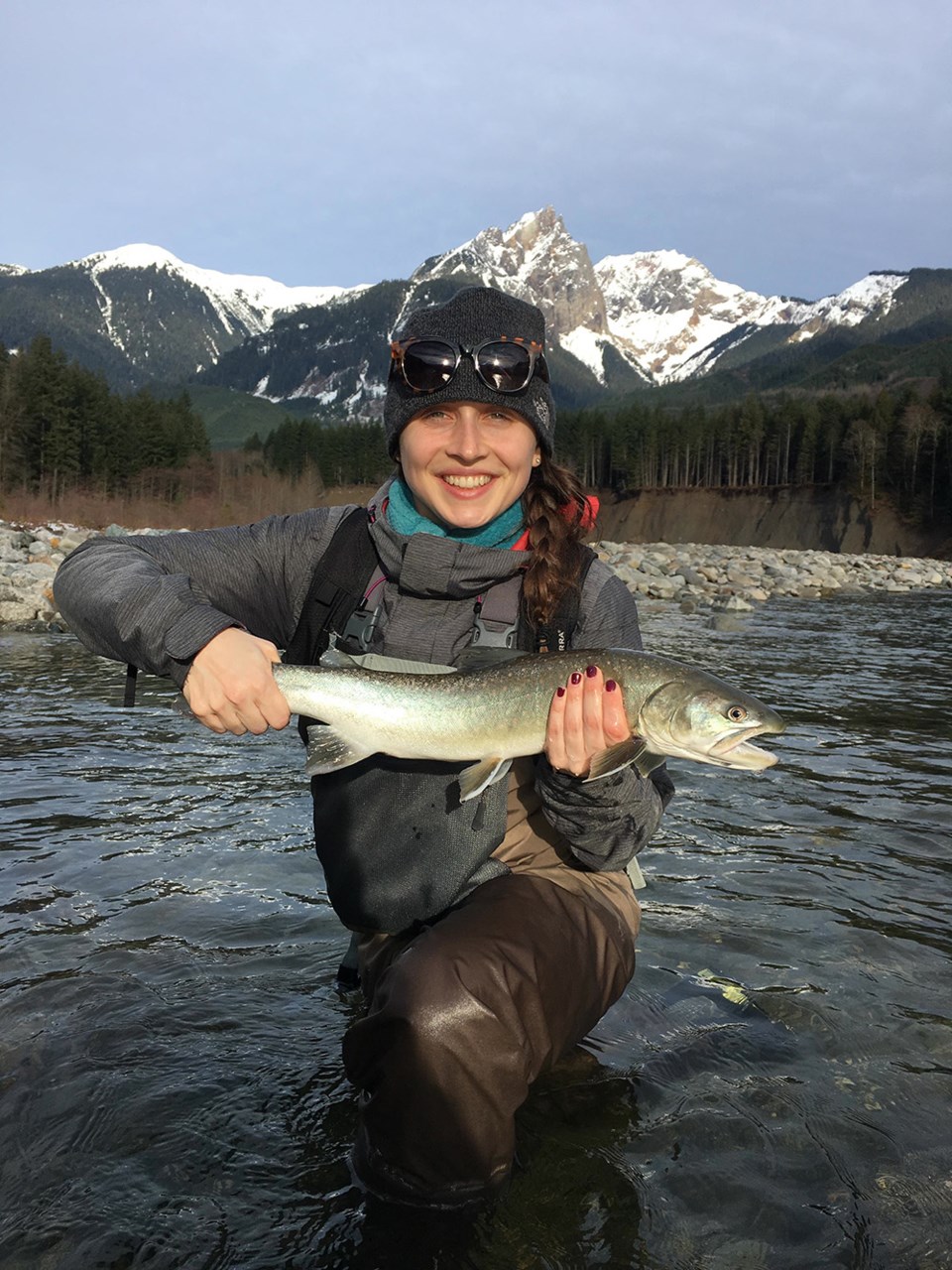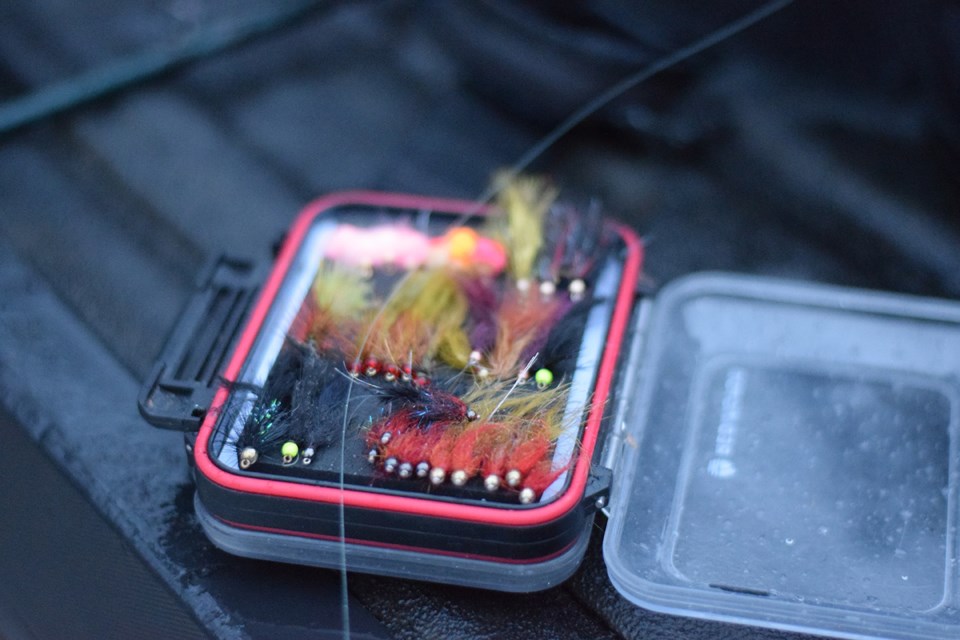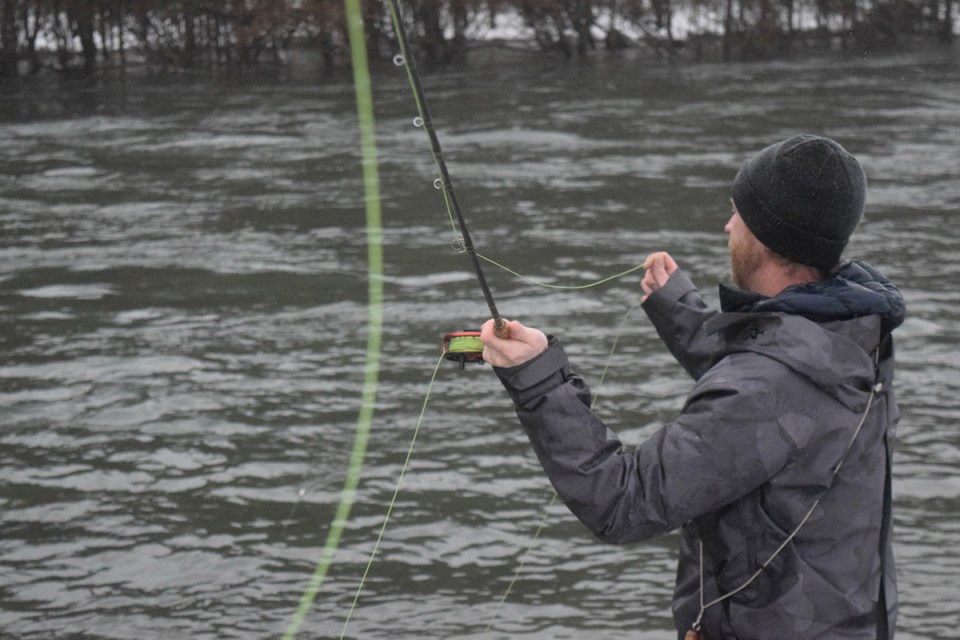When I open my front door on Sunday, the first thing Rick MacKay does is ask me how many layers of socks I plan on wearing.
It’s January in Squamish, and it’s predictably wet, rainy and dark. Since we’re planning on standing in glacial rivers for hours today for my first attempt at fly-fishing, I head back in to put on another pair.
MacKay works for Pemberton Fish Finder. He’s my guide for the morning – taking care of everything from where to fish, to what gear to use, to how many pairs of socks to wear.
The owner of Fish Finder, Brad Knowles, has fished the area for a long time and took a stint as a fishing guide when he was younger. It wasn’t until 2010 – during the 2010 Winter Olympics in Whistler – that he seriously considered starting a guiding business.

But the key to making it work as a tourist attraction wasn’t fly fishing and open water; not in a place where the season only lasts three months.
“I did a lot of ice fishing, but I never looked at it as a business. People were looking for other things to do in the winter in Whistler. The light came on, and we got our start ice fishing,” he said.
Seven years later, Knowles hires around 10 part-time and full-time guides during the summer, and four during the winter. Most of the guests this time of year are families heading out into the ice, on rest days from Whistler’s slopes.
Down in Squamish, in January, the rivers may not freeze, but the water is still very cold.
After a brisk and snowy hike down to the water, MacKay gives me advice on how to wade through the current. By the end of the morning, I’ll have it mostly figured out. Right now, I’m feeling the tug of the cold and fast flow trying to trip me up as we wade in deeper and deeper. I’m trying not to panic.
I think there will be an article written if I slip into the icy water and end up downriver, but I might not be the one writing it.
MacKay is more optimistic, far as I can tell. He offers to hold the back of my waders as we move mid-stream. By the time we reach the bank I’m starting to trust the metal studs on my boots.
Having already rigged up our rods before the hike in, we’re ready to start a casting lesson.
In spin casting, the weight of a plastic or metal lure pulls the line from the reel and out over the water. In fly-fishing, it’s the opposite. The imitation fly is so light that an angler relies on the motion of the cast and the weight of the line to do the work.
It’s a beautifully intimidating technique, and I keep pausing to watch MacKay cast, trying to figure out how it’s supposed to work. The cast always feels like magic when I start the movement, but it’s easy to get the feeling wrong and end up with a knotted line or a loud smack on the water.
Sooner than I expect, MacKay gives me the go-ahead to try my sloppy cast towards the far bank, where he expects the fish to be waiting.
Squamish is a beautiful place to fish, with iconic rocky banks and rising mountains, but it doesn’t have the remoteness of luxury lodges further north. Knowles explains that isn’t necessarily a downside for some clients.
“We’ve started focusing on Whistler becoming a destination for fishing, rather than just catering to the people who were there,” he says.
“Squamish offers great salmon fishing, for all five specific salmon, and you’re not far away from the luxuries of Vancouver and Whistler. I think that’s what people find inviting. When you’re in these super remote lodges, it’s tough to get your families to join you. Now we can make it more of a family destination for fishing.”
MacKay and I are hoping to tempt a bull trout or a rainbow trout; our lures made to imitate bits of salmon flesh or a salmon egg drifting downstream. It’s still early to expect to see a “Squamish unicorn” – a steelhead salmon – prized for putting up a tough fight.
In rivers and streams, all wild steelhead and trout are strictly catch-and-release. Anglers must have a fishing license, and only single barbless hooks are permitted.
Crafting the lures is another part of the hobby – many are hand-tied, and customized for different waterways. To appeal to fish, a guide has to know what the fish in any particular area, at any time of year, want to eat. The abundance of rivers, lakes, and streams provides a huge variety of spots to target.
“The scenery in Squamish is absolutely spectacular, and the proximity to the ocean makes for fresh fish, which is what everybody wants – fresh meaning not caught a lot, and still nice and silver,” says Brian Niska, who owned a fly shop in Squamish for a time and operated a Squamish-based guiding company called Whistler Fly Fishing.

His main focus now is Skeena Spey, his fishing lodge in Terrace, but he still employs guides in Squamish. Some of his guests split their time between north and south, especially during steelhead season.
“Squamish is a real surprise for people, how good it can be when conditions are right, certainly the scenery is spectacular,” said Niska. He explains that the appeal for many clients is to get on diverse waterways and explore both ends of the province.
“I think people enjoy it based on the whole full experience of being outside in nature,” he says.
The fish in the river are far from the only nature we see spending hours on the bank. There are trees laden down with eagles, looking for the same fish we are. The much smaller dipper birds are looking for the type of treat I’m offering the trout – a little salmon egg.
MacKay has much better wildlife stories, including a startling encounter with a local wolf pack.
“I think you’re a little more in tune with your surroundings when you’re fly fishing,” says Knowles. “There’s quite a bit more to it, but once you have it, it’s very peaceful, but your hands are always doing something, there’s always motion.”
I’ve been disappointed fishing in Squamish before, with my spin-gear, but the challenge of trying something new in fly-fishing gives me a satisfying feeling. I know I did something right – I did feel, and lose, a fish on the line – but they aren’t very hungry today.
It’s difficult to explain the experience of being out on the water, the appeal of the challenging cast and the magic of landing a fish.
Fortunately, the sport has a rich history of old sayings to defer to.
“The iconic saying is ‘Fly-fishing is more than fly-fishing,’” says Knowles.
Having been outwitted by west coast fishing again, I don’t have the first-hand knowledge to explain the feeling.
But fortunately, I also know my fishing clichés, and I’ve always been comforted by the old adage that if you caught something every time, they’d call it “catching” and not “fishing.”
The day out on the Cheakamus is a reminder life is better when you focus more on the fishing than the catching.
*Please note, this post has been corrected since it was first published. Originally, bull trout was identified as bullhead. The Chief apologizes for the error, especially to the fish.



